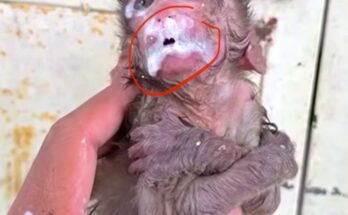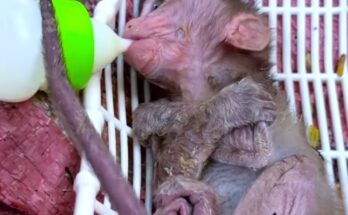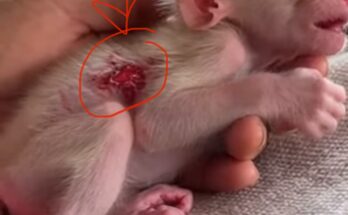When it comes to wildlife health, prevention is often considered the best strategy. But in the case of primates—especially monkeys—suffering from severe diarrhea, prevention becomes a more complicated challenge than it appears. This seemingly simple issue unveils a range of difficulties for veterinarians, caretakers, researchers, and conservationists alike.
Understanding the Challenge
Monkeys are highly social, mobile animals with complex dietary and environmental needs. Diarrhea in monkeys is not just a minor inconvenience—it can be a symptom of serious infections, parasites, dietary imbalances, or even psychological stress. When the condition becomes severe, it can lead to dehydration, rapid deterioration, and even death if not managed promptly.
But preventing severe diarrhea isn’t as straightforward as it might be in domestic animals. Unlike a controlled environment such as a laboratory or a zoo enclosure, wild or semi-wild monkey populations are exposed to a dynamic mix of risk factors—many of which are nearly impossible to eliminate completely.
Why Prevention Is Difficult
- Environmental Exposure:
Monkeys living in the wild or in open sanctuaries encounter a wide variety of pathogens through water, food, soil, and even insects. Unlike domesticated species, you can’t isolate every variable in their environment. Water sources may be contaminated, and feeding on spoiled fruit or human garbage can introduce harmful bacteria. - Social Behavior:
Grooming, playing, and communal eating are essential aspects of monkey social life—but these behaviors also contribute to the rapid spread of illness. A single infected monkey can transmit pathogens to many others in a short span, making containment of early cases extremely difficult. - Stress Factors:
Stress from captivity, environmental changes, or human interference can significantly impact a monkey’s digestive health. Even well-meaning rehabilitation centers sometimes unintentionally trigger gastrointestinal problems by changing diet too quickly or housing incompatible individuals together. - Resistance to Intervention:
Preventive health care, such as vaccinations, anti-parasitic treatments, or even probiotics, often require close contact with the animal. In wild or semi-wild populations, this can be stressful or dangerous for both humans and monkeys. Frequent handling for preventive care can also backfire, increasing stress and susceptibility to illness.
Reactive vs. Preventive Care
While prevention is ideal, the reality often pushes caretakers toward reactive treatment. Once symptoms like severe diarrhea are identified, immediate medical care—including fluid therapy, antibiotics, or isolation—becomes critical. However, by this point, the disease may have already spread.
Some facilities have begun integrating better monitoring technologies—such as fecal testing, environmental sampling, and behavior analysis—to detect early warning signs. However, these systems are expensive, labor-intensive, and not always feasible in under-resourced areas.
The Path Forward
To address the problem, a more realistic approach may be adaptive prevention—accepting that not all cases can be avoided but improving rapid response capabilities. This includes better training for caretakers, community education in regions near wild monkey populations, and the development of species-specific diets and probiotics that strengthen gut health naturally.
In conclusion, while prevention remains the gold standard in veterinary care, the unique biology, behavior, and habitat of monkeys make it a far more complex issue when dealing with severe diarrhea. Balancing proactive and reactive strategies, and investing in sustainable care systems, is the key to protecting these intelligent and vulnerable animals.



